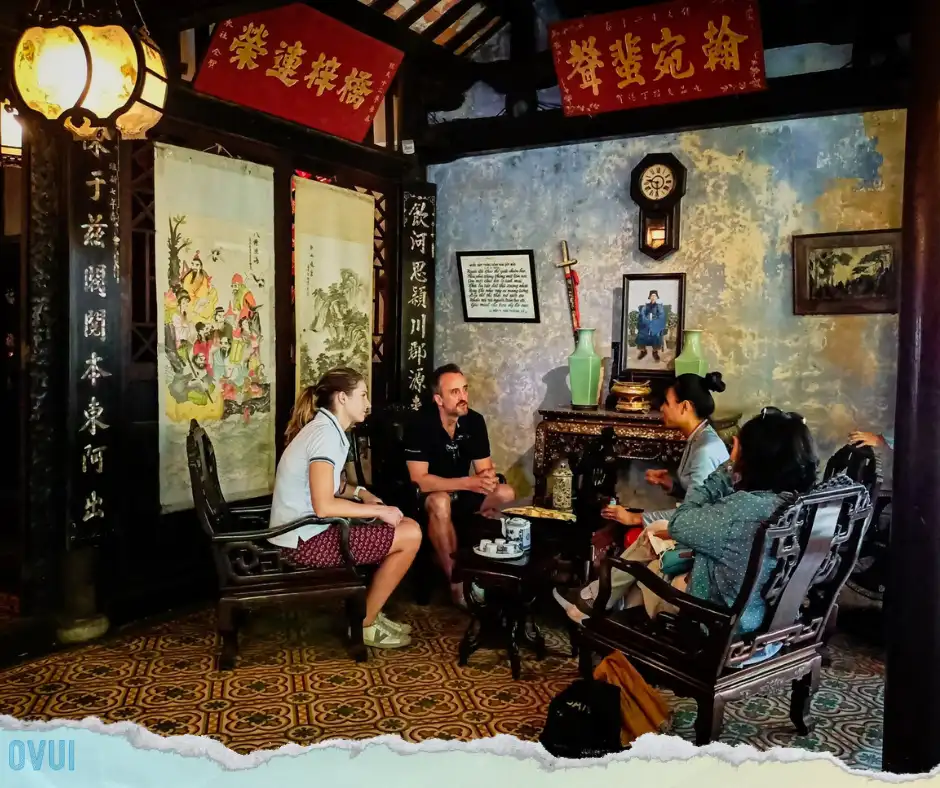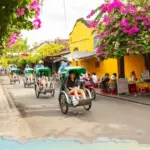Tran Family Chapel in Hoi An: A Complete Guide to Vietnam’s 200-Year-Old Heritage Site
As a local cultural expert who has spent years exploring the historical treasures of Hoi An, I’m excited to share my in-depth knowledge of the Tran Family Chapel, one of the most significant ancestral houses in the region. Located at 21 Lê Lợi, Phường Minh An, Hội An, Quảng Nam, this architectural marvel stands as a testament to Vietnamese heritage and family traditions.
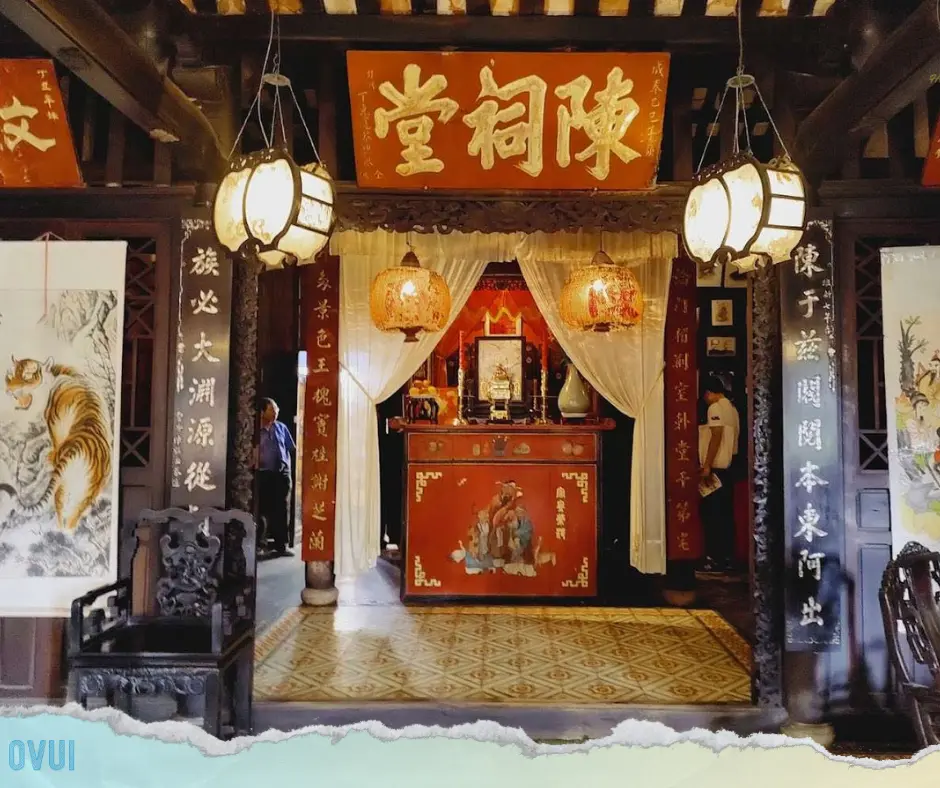
Discover the Tran Family Chapel in Hoi An: A Heritage Site of Vietnamese Clan Culture With Ovuigo.com
The Tran Family Chapel, established over two centuries ago, stands as a living monument to Vietnamese clan culture in the heart of Hoi An Ancient Town. This ancestral house, maintained by generations of the Tran family, serves as both a historical landmark and an active place of worship.
The chapel’s establishment dates back to the early 19th century when the Tran family settled in Hoi An during its golden age as a trading port. The family, originally from China, integrated local Vietnamese traditions with their ancestral practices, creating a unique cultural blend that’s reflected in every aspect of the chapel.
What makes this site particularly special is its continuous use by the Tran family for ancestral worship while simultaneously welcoming visitors to experience authentic Vietnamese cultural heritage. The chapel opens daily from 7 AM to 9 PM (with some variations), allowing tourists to witness traditional practices and sometimes even ongoing ceremonies.
The site’s significance extends beyond its religious function. It serves as a repository of historical artifacts, including ancient documents, photographs, and family records that chronicle both the Tran family’s history and Hoi An’s development as a commercial hub. These artifacts provide valuable insights into the social and economic life of Vietnamese merchant families during the 18th and 19th centuries.
Visitors can observe the daily rituals performed by family members, including the offering of incense and fruits to ancestors, demonstrating the living nature of Vietnamese traditions. The chapel’s caretakers, often direct descendants of the Tran family, share stories and explain the significance of various artifacts and customs.
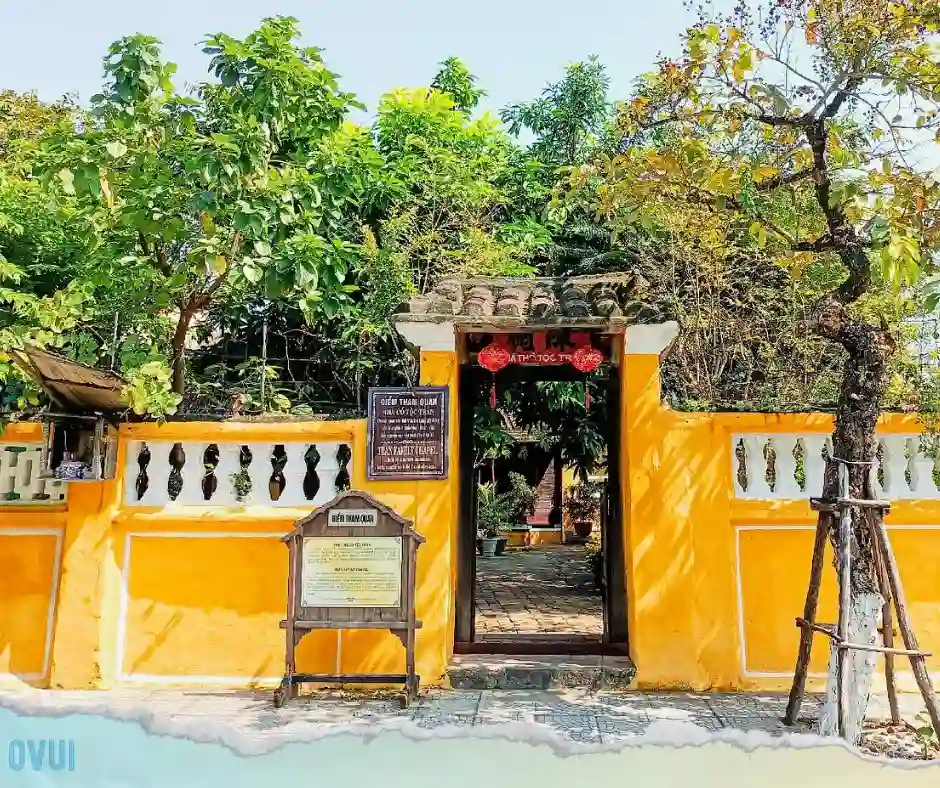
The Historical Significance of the Tran Family Chapel in Vietnamese Ancestral Worship
The Tran Family Chapel exemplifies the deep-rooted practice of ancestor worship in Vietnamese culture. This tradition, fundamental to Vietnamese spiritual life, reflects the Confucian principle of filial piety and the belief in maintaining connections with deceased family members.
The chapel’s altar arrangement follows strict traditional guidelines. The main altar, dedicated to the most distant ancestors, occupies the central position. Secondary altars honor more recent generations and family members who made significant contributions to the clan. Each altar features ancestral tablets, photographs, and personal items of the deceased.
During important dates in the lunar calendar, the chapel becomes a gathering place for extended family members. They perform elaborate ceremonies, offer sacrifices, and share communal meals. These rituals strengthen family bonds and pass cultural values to younger generations.
The architectural layout of the chapel facilitates these worship practices. The main hall, designed for communal gatherings, can accommodate large family assemblies during major festivals and death anniversaries. The side chambers store ritual implements and family records, while the courtyard provides space for preparation of offerings and ceremonial activities.
Throughout the year, the chapel observes various traditional festivals:
- Lunar New Year (Tết) celebrations
- Mid-Autumn Festival gatherings
- Death anniversary commemorations
– Ancestral worship days according to the lunar calendar

Architectural Features of the Tran Ancestral House: A Fusion of Vietnamese and Chinese Styles
The architectural brilliance of the Tran Family Chapel represents a perfect harmony between Vietnamese and Chinese building traditions. The structure employs the traditional three-compartment design common in Vietnamese architecture while incorporating Chinese elements in its decorative features.
Key architectural elements include:
- Yin-Yang tiled roof with upturned edges
- Intricately carved wooden columns and beams
- Dragon and phoenix motifs symbolizing prosperity
- Traditional wooden lattice windows
- Interior courtyards for natural lighting and ventilation
The building materials showcase traditional craftsmanship: - Jack fruit wood for main structural elements
- Clay tiles handmade using local techniques
- Natural paint derived from tree sap and minerals
- Stone foundation adapted to local soil conditions
The spatial organization follows feng shui principles: - Main entrance aligned with positive energy flows
- Balanced arrangement of living and worship spaces
- Strategic placement of doors and windows
-
Tran Family Chapel Harmonious integration with surrounding environment
Plan Your Visit to the Tran Family Chapel in the Heart of Hoi An
To make the most of your visit to the Tran Family Chapel, consider these practical tips based on my extensive experience guiding visitors through this historical site:
Operating Hours:
- Monday to Sunday: 7 AM to 9 PM
- Some days close earlier at 6 PM
- Best visiting times: Early morning or late afternoon
Location and Access:
The chapel is located at 21 Lê Lợi, Phường Minh An, Hội An, Quảng Nam, easily accessible within Hoi An’s Ancient Town.
Admission Information:
- Included in Hoi An Ancient Town ticket
- Separate donation box available for chapel maintenance
- Guided tours available upon request
Visitor Guidelines: - Dress respectfully (covered shoulders and knees)
- Remove shoes before entering worship areas
- Speak quietly, especially during ceremonies
- Photography allowed but no flash in altar areas
Need assistance planning your visit? Contact our local expert via WhatsApp for personalized guidance.
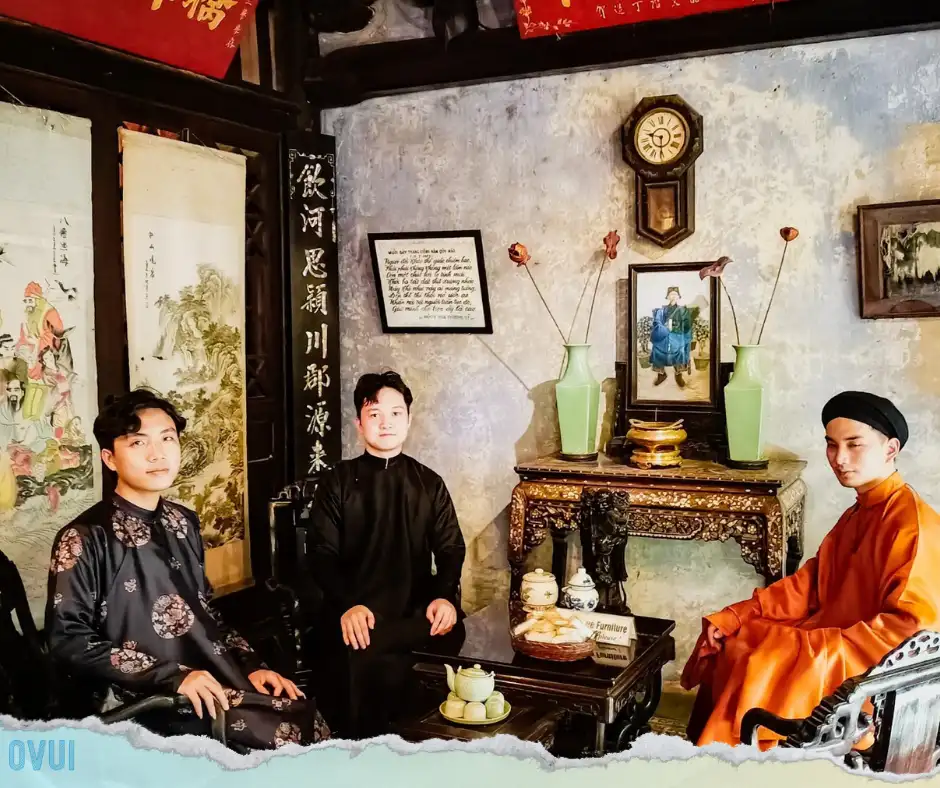
Tran Family Chapel and Its Role in Heritage Tourism and Cultural Preservation in Vietnam
The Tran Family Chapel plays a crucial role in Vietnam’s heritage tourism sector while maintaining its authenticity as a living cultural site. Its preservation demonstrates successful balance between tourism accessibility and cultural integrity.

The chapel’s contribution to heritage preservation includes:
- Documentation of traditional architectural techniques
- Preservation of ancestral worship practices
- Maintenance of historical artifacts and documents
- Education about Vietnamese family traditions
Conservation efforts focus on: - Regular maintenance using traditional methods
- Documentation of historical records
- Training younger family members in cultural practices
-
Tran Family Chapel Collaboration with heritage conservation experts
The site’s importance in heritage tourism manifests through:
- Cultural exchange opportunities
- Educational programs for visitors
- Support for local tourism economy
- Promotion of sustainable tourism practices
Future preservation initiatives include: - Digital documentation of artifacts
- Enhanced visitor interpretation facilities
- Expanded educational programs
-
Tran Family Chapel Strengthened community involvement
The Tran Family Chapel remains a vital link between past and present, offering visitors an authentic glimpse into Vietnamese cultural heritage while maintaining its sacred function for the Tran family. Its successful preservation model serves as an example for other heritage sites in Vietnam.
For questions about visiting the Tran Family Chapel or to arrange a guided tour, contact our local expert via WhatsApp.
Experience the living heritage of Hoi An at the Tran Family Chapel, where centuries of tradition meet modern cultural preservation. Plan your visit today and immerse yourself in one of Vietnam’s most authentic ancestral houses.

